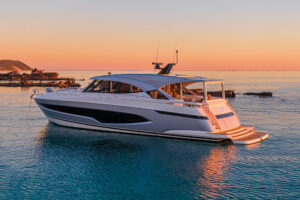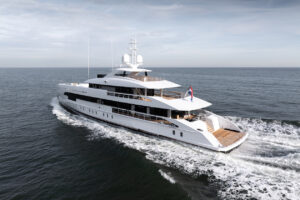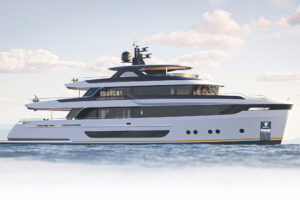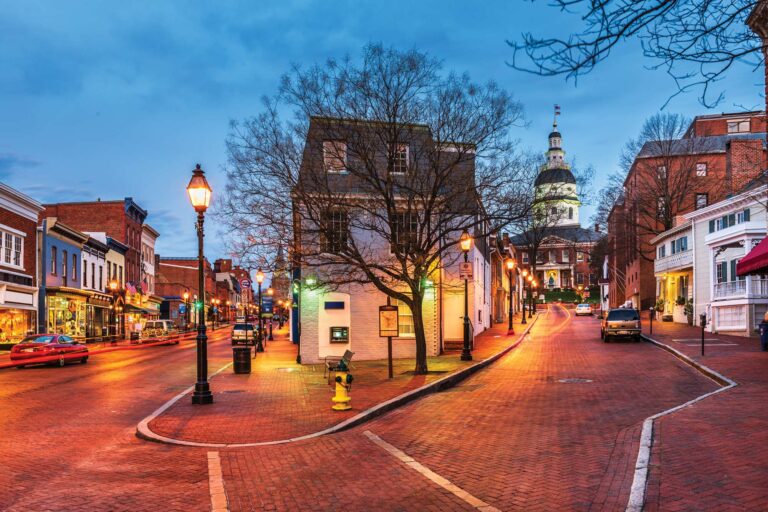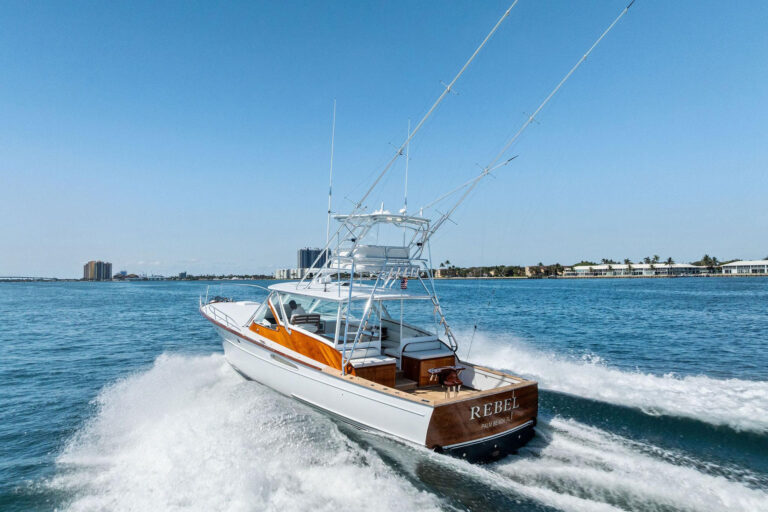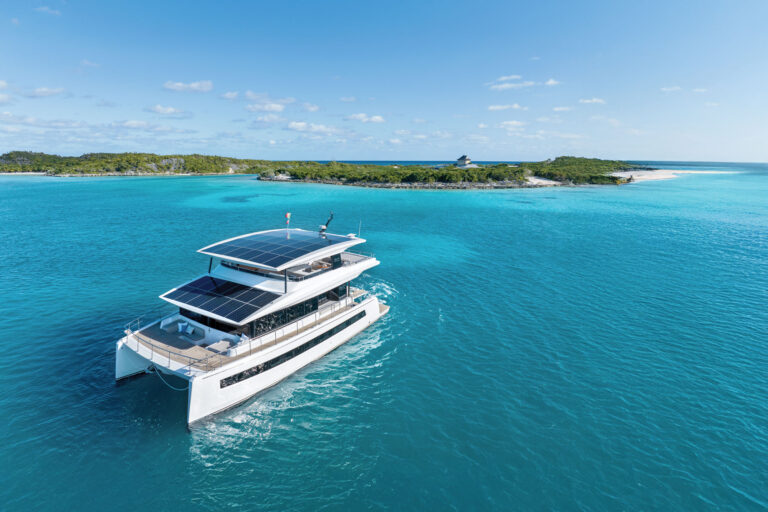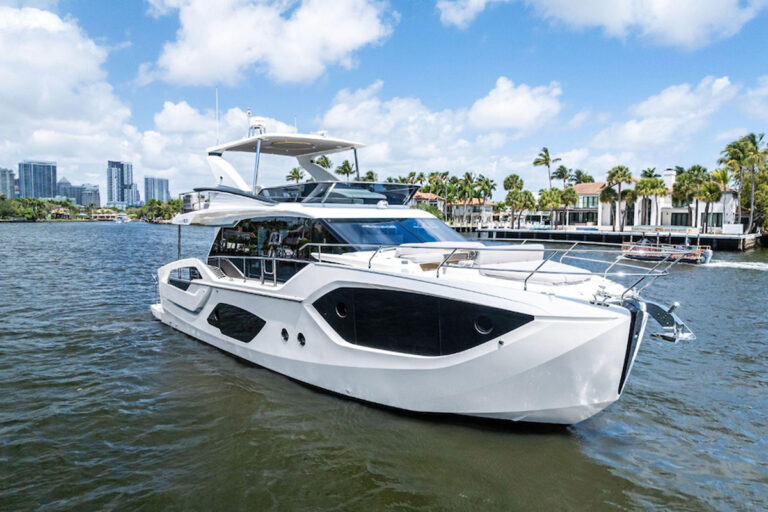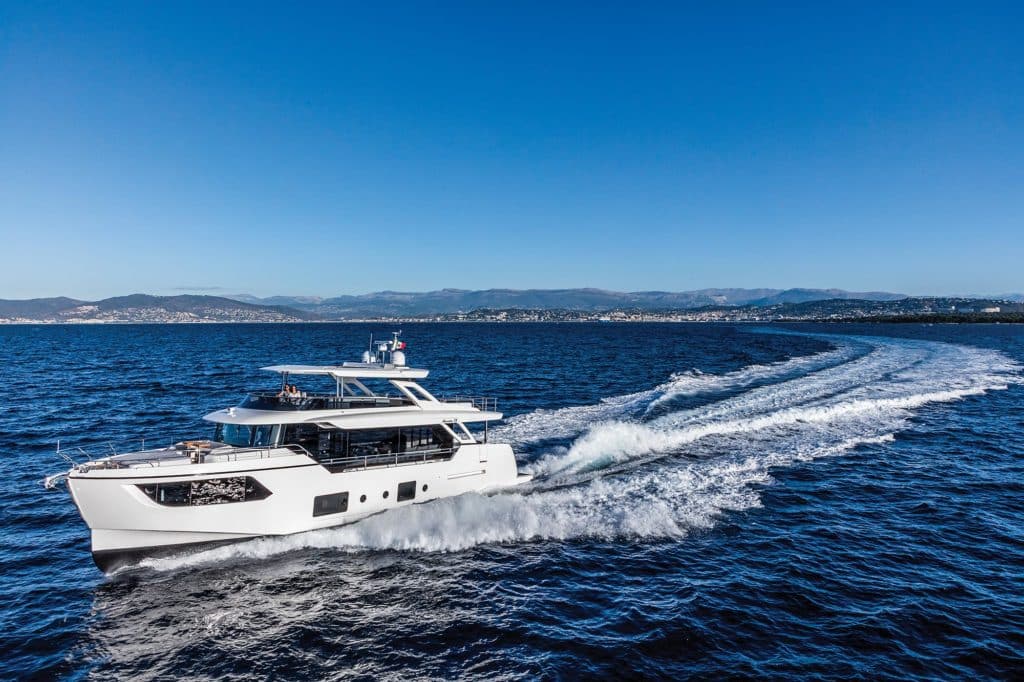
I wasn’t expecting the speed.
At first glance, Absolute Yachts’ Navetta 73 looks, well, shippy. Her stout profile and broad shoulders (with an 18-foot-4-inch beam) are indicative of a vessel built for long-distance cruising. And while the 73 is certainly capable of that kind of voyage, with an 800-nautical-mile range at about 9 knots, my eyes grew to saucer size when she hit 26 knots.
Skirting across the Gulf of Napoule off the coast of Cannes, France, my test 73’s 1,000 hp Volvo Penta IPS1350s quickly spooled up to 2,439 rpm. The 57-ton displacement vessel hit that wide-open-throttle speed atop a 3-foot heave. The ride was comfortable, with little roll moment felt on her open flybridge. An optional Seakeeper 16 gyrostabilizer and Volvo Penta’s auto-trim system with Interceptor tabs both helped in terms of stability.
She made 21 knots at 2,200 rpm, her standard cruise speed. At this pace, her diesels burned around 73.9 gph, providing a respectable 269-nautical-mile range based on her 1,056-gallon fuel capacity with 10 percent reserve. Her spectrum-spanning performance attributes should appeal to adventurers as well as to yachtsmen who want shiplike lines and feel, plus the ability to go fast when time is short or you just want some wind in your hair.

For those who prefer to keep their coifs just so, a plastic enclosure can button up about two-thirds of the 592-square-foot flybridge space, and owners can heat or air-condition the area. There’s also a Bimini top option to add even more shade. My test boat was open on all sides with a hardtop and retractable roof.
The flybridge is designed for much more than driving from the centerline helm station. This area is set up for alfresco entertaining, with a teak dining table for six to eight guests just abaft the helm and to starboard. A bar across from it has a Vitrifrigo fridge, freezer and ice-maker. A settee for three to four along with two loose chairs abaft the dining area create a conversation nook, and two chaise-style lounges can be placed far aft for catching rays.
It would be easy to spend all day on the flybridge, but equally thoughtful features are in this yacht’s interior spaces too. The most noteworthy include a sliding glass door leading from the covered teak cockpit to the salon. That door opens more than 5 feet wide and has 6-foot-7-inch headroom.
Flow is the word that came to mind as the salon stretched seamlessly from that glass door to the bulkhead just forward of the formal dining table for eight, with the galley beyond the bulkhead. The salon’s 6-foot-11-inch headroom helps with volume, and a white-oak sole adds perceived length to the room. Sole-to-ceiling windows enhance the feeling of spaciousness even more, while cut-down bulwarks increase inbound light and provide great vistas from all points in the salon and dining area.
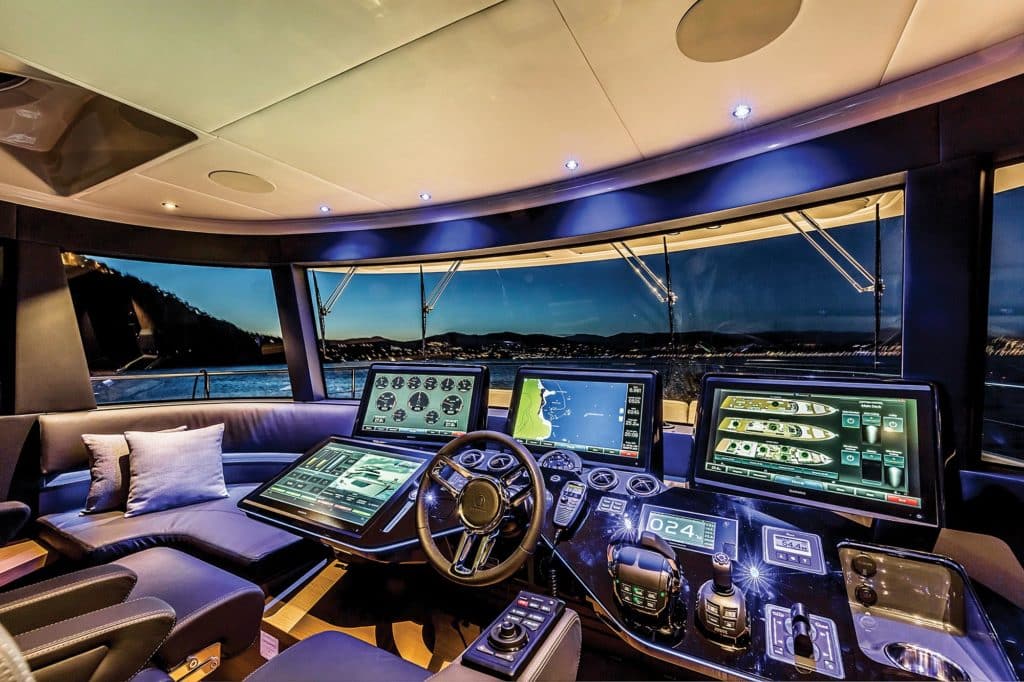
The galley can be closed off via two pocket doors, one to the enclosed pilothouse and one to the salon’s companionway. Side-deck access is to port for crew to serve meals and drinks without interrupting the soirée.
When it comes to dropping the hook from the Quick windlass and calling it a night in a favorite cove, choosing a stateroom may be the owner’s most difficult decision. Technically, there is one master forward on the 73 with a queen berth, en suite head, double sink and shower stall. The space is bright, thanks to flanking hullside windows that measure 4 feet 7 inches wide by 2 feet 4 inches high. But the full-beam VIP stateroom amidships, with access via a stairway off the salon, could easily be a second master. The VIP has a vanity and office to starboard and, like all three of the other staterooms on board, an en suite head.
The third stateroom, abaft the master and to port, could also be used as a VIP. It has an athwartships queen berth, 6-foot-5-inch headroom and walk-in closets. Across the companionway to starboard is the fourth stateroom, with twin berths for the kids.
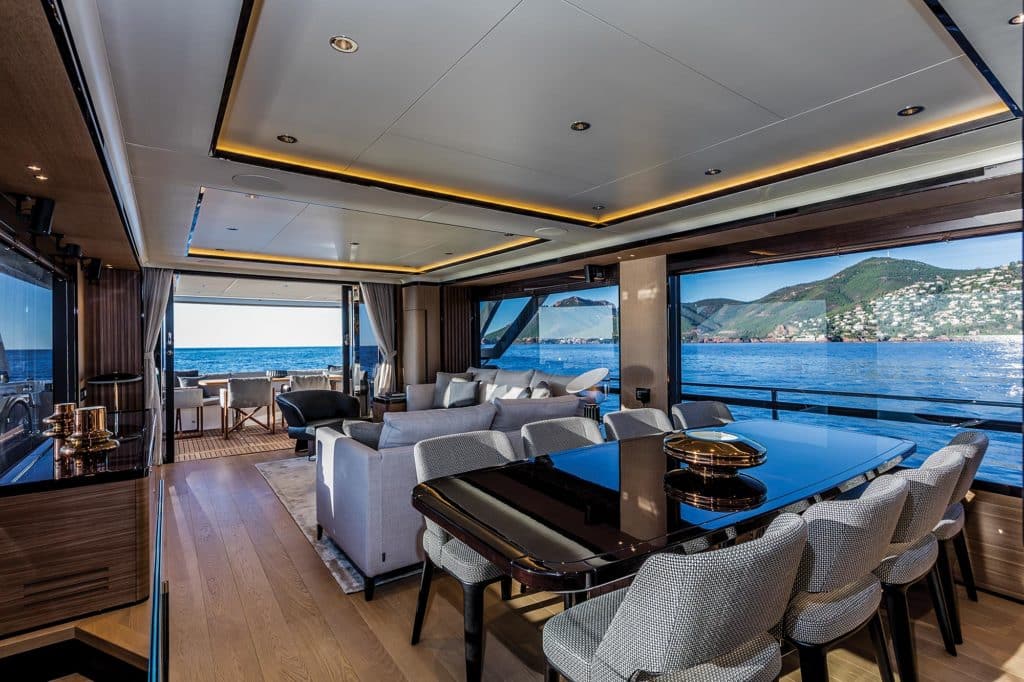
Throughout the guest areas, there’s a surprising level of elegance, with flourishes that include high-gloss dark-walnut accents, leather furnishings and Calacatta marble.
Outside, the 73 has a voyager’s look, and her build supports her aesthetic. Absolute yachts are hand-laid with fiberglass where the builder believes pure strength is required, and compound materials such as Kevlar and carbon fiber are employed in spots where strength with reduced weight is desired. Wood is also used in some stringers.
While the Absolute Navetta 73’s speed and interior style surprised me, her engineering impressed me. Sometimes, creating massive interior volume can make a yacht, well, tall — and in turn, tender, but the 73 is solid underfoot. She also is a hybrid, in the sense that she should appeal to long-range cruisers, liveaboards and yachtsmen with a penchant for entertaining lots of friends.
With all that she has going for her, I wouldn’t be surprised if the Absolute Navetta 73 soon becomes a familiar sight in a marina near you.


